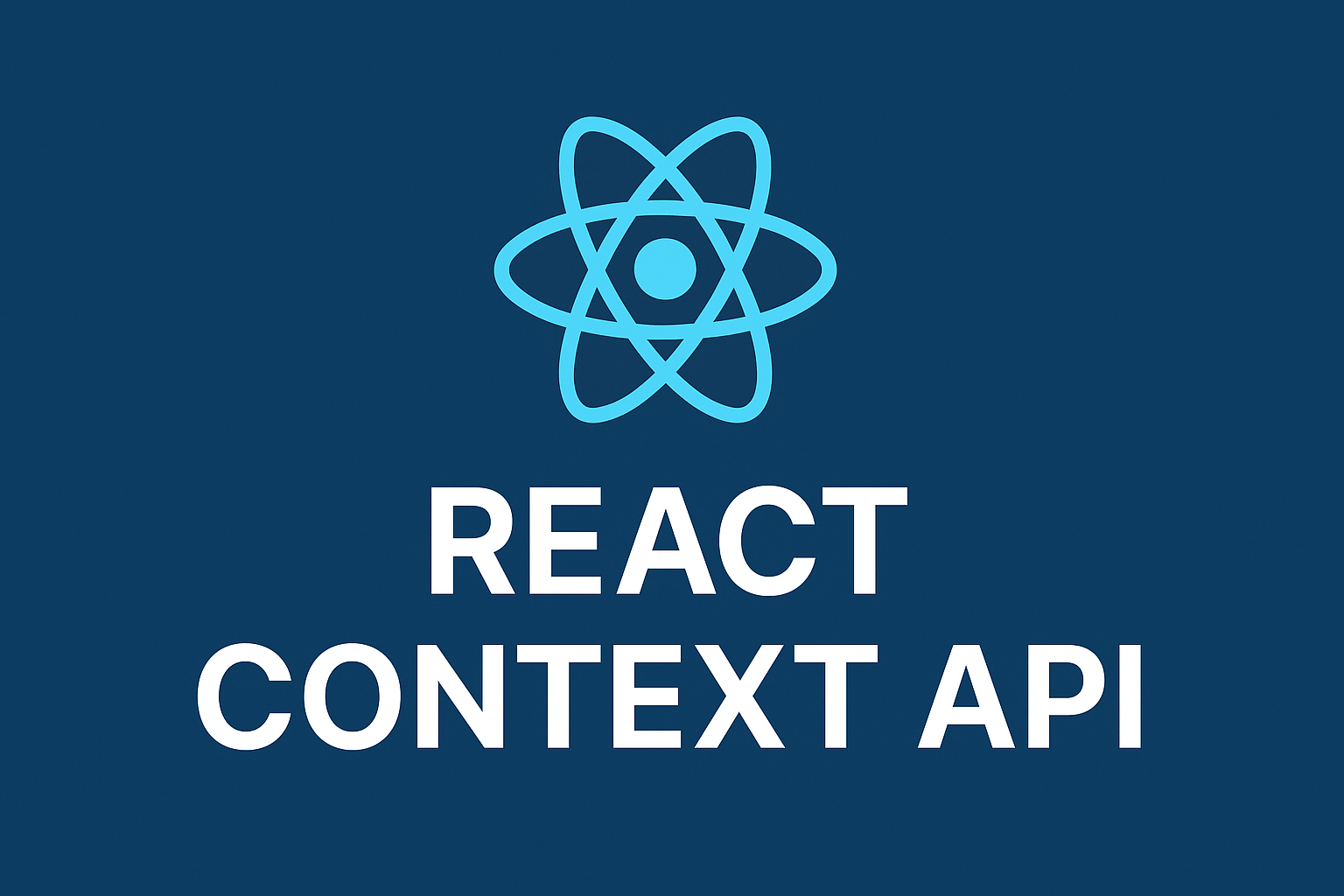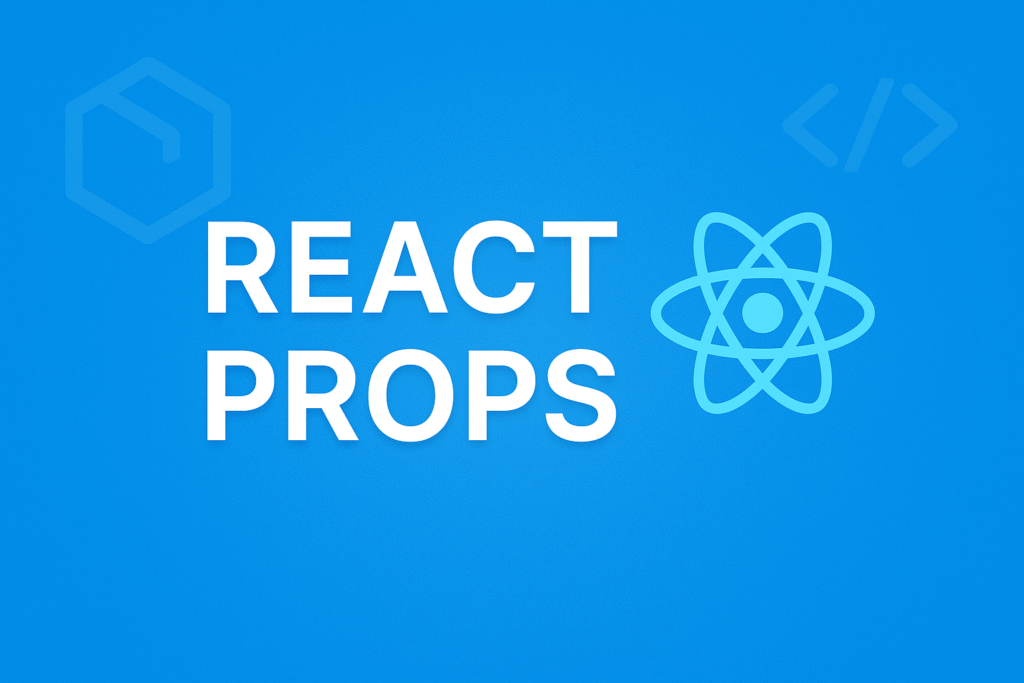
This guide covers everything from what React Context API is, how to use it with real-world examples, and when (or when not) to use it—perfect for beginners and experienced developers alike.
Table of Contents
React is renowned for its component-based architecture, which promotes reusability and modularity. However, as applications grow in complexity, passing data down through multiple levels of components (prop drilling) can become cumbersome and inefficient.
This is where the React Context API comes to the rescue, offering an elegant solution for managing global state and sharing data across your component tree without explicit prop passing.
What is React Context API?
React Context API provides a way to share values (like state or functions) between components without explicitly passing props down the component tree.
Context provides a way to pass data through the component tree without having to pass props down manually at every level.
In a typical React application, data is passed top-down (parent to child) via props, but such usage can be cumbersome for certain types of props (e.g. locale preference, UI theme) that are required by many components within an application. Context provides a way to share values like these between components without having to explicitly pass a prop through every level of the tree.
Why Use React Context API?
Imagine you have a User component at the top of your application, and several deeply nested components need access to the userName or userId. Without Context, you’d have to pass userName and userId as props through every intermediate component. This is known as “prop drilling.”
Prop Drilling: The act of passing data from a parent component down to deeply nested children components through multiple layers of props, even if intermediate components don’t directly use that data.
The React Context API solves this by providing a direct channel for data, making it available to any component that needs it, skipping the intermediate components entirely.
Key Motivations:
- Avoid Prop Drilling: This is the primary reason. For data needed by many components at different nesting levels, Context eliminates the tedious and error-prone process of passing props down manually.
- Share Global Data: It’s perfect for data that is truly “global” or applicable to a significant portion of your application’s UI, such as themes, authentication status, or user settings.
- Simplicity for Certain Scenarios: For simpler global state needs, Context provides a straightforward solution without the overhead of external state management libraries.
Core Components of React Context API
The React Context API involves three main components:
- React.createContext: This function creates a Context object. When React renders a component that subscribes to this Context object, it will read the current context value from the closest matching Provider above it in the tree.
const MyContext = React.createContext(defaultValue);
- defaultValue: This argument is used when a component consumes the context without a matching Provider above it in the tree. It helps to set a default value in case no Provider is found.
- Context.Provider: Every Context object comes with a Provider React component that allows consuming components to subscribe to context changes. The Provider component accepts a value prop to be passed to consuming components that are descendants of this Provider.
<MyContext.Provider value={/* some value */}> {/* Children components that need access to the context */} </MyContext.Provider>- value: This prop is the actual data that will be made available to all consumers of this Context. Any component rendered inside this Provider can access this value.
- Context.Consumer (Legacy, but good for understanding) / useContext Hook (Recommended): These are the ways to consume the data provided by the Provider.
- Context.Consumer (Class Components / Older Approach):
<MyContext.Consumer> {value => ( {/* Render something based on the context value */} <div>The value is: {value}</div> )} </MyContext.Consumer>The Context.Consumer uses a render prop pattern, where the child is a function that receives the current context value as its argument.
- useContext Hook (Functional Components – Recommended):
import React, { useContext } from 'react'; import MyContext from './MyContext'; // Assuming MyContext is exported from a file function MyComponent() { const value = useContext(MyContext); return <div>The value is: {value}</div>; }The useContext hook is the modern and preferred way to consume context in functional components. It takes the Context object itself as an argument and returns the current context value.
- Context.Consumer (Class Components / Older Approach):
Step-by-Step React Context API Example Explained
Let’s illustrate with a simple theme toggler example:
// 1. Create the Context (ThemeContext.js)
import React from 'react';
const ThemeContext = React.createContext('light'); // Default value is 'light'
export default ThemeContext;
// 2. Provide the Context (App.js)
import React, { useState } from 'react';
import ThemeContext from './ThemeContext';
import Toolbar from './Toolbar';
function App() {
const [theme, setTheme] = useState('light');
const toggleTheme = () => {
setTheme((prevTheme) => (prevTheme === 'light' ? 'dark' : 'light'));
};
return (
<ThemeContext.Provider value={theme}>
<button onClick={toggleTheme}>Toggle Theme</button>
<Toolbar />
</ThemeContext.Provider>
);
}
export default App;
// 3. Consume the Context (Toolbar.js)
import React from 'react';
import ThemeButton from './ThemeButton';
function Toolbar() {
return (
<div>
<ThemeButton />
</div>
);
}
export default Toolbar;
// 4. Consume the Context (ThemeButton.js)
import React, { useContext } from 'react';
import ThemeContext from './ThemeContext';
function ThemeButton() {
const theme = useContext(ThemeContext);
return (
<button style={{ background: theme === 'dark' ? 'black' : 'white', color: theme === 'dark' ? 'white' : 'black' }}>
Current Theme: {theme}
</button>
);
}
export default ThemeButton;
In this example:
- ThemeContext is created with a default value.
- App component acts as the Provider, holding the theme state and a toggleTheme function. It passes the current theme as the value to ThemeContext.Provider.
- Toolbar is an intermediate component that doesn’t care about the theme.
- ThemeButton (deeply nested) directly consumes the theme using useContext(ThemeContext) and applies styles based on it, without receiving any props.
Advanced Tips for Experienced Developers
-
Performance Optimization: Avoid unnecessary re-renders by splitting contexts.
-
Modular Contexts: Create different contexts for different domains like Auth, UI, Theme.
-
Testing: You can mock Context values in unit tests using a custom provider wrapper.
-
Secure Context Sharing: Validate data inside the provider before exposing it.
Summary of Examples
| Feature | Code Used | Benefit |
|---|---|---|
| Context Creation | createContext() | Establishes shared data |
| Context Provider | <Context.Provider> | Supplies state to children |
| Context Consumer | useContext() | Access state without props |
| Nested Components | App → Provider → Child | Clean state flow |
| Real-world Apps | Theme, Auth, Cart | Common use cases in production |
When NOT to Use React Context API
While powerful, React Context API isn’t a panacea for all state management. There are scenarios where it might not be the best fit:
- Frequently Changing State: If the data stored in context updates very frequently (e.g., real-time data from a WebSocket, or an input field’s value that changes with every keystroke), every component consuming that context will re-render, potentially leading to performance bottlenecks. In such cases, component-level state or a more optimized state management library might be better.
- Highly Coupled/Interdependent State: When your state is complex, involves intricate interactions between different pieces of data, and requires side effects (e.g., fetching data, animations), managing it solely with Context can become unwieldy.
- Application-Wide, Complex State: For truly large-scale applications with a very complex global state that requires features like middleware, time-travel debugging, or explicit action dispatching, dedicated state management libraries (like Redux, Zustand, Recoil, Jotai) offer more robust solutions and better developer tooling.
- Unnecessary Global Scope: If data is only needed by a few closely related components, passing props or using component-level state is often simpler and more explicit than creating a new context. Overusing context can lead to a less clear data flow.
- Optimized Re-renders are Critical: While optimizations like
memoanduseCallbackcan help, they add complexity. If performance is extremely critical and fine-grained control over re-renders is paramount, other patterns might be more suitable.
Comparison: React Context API vs Redux vs Zustand
| Feature | Context API | Redux | Zustand |
|---|---|---|---|
| Built-in | ✅ Yes | ❌ No | ❌ No |
| Boilerplate | ❌ Medium | ❌ High | ✅ Low |
| DevTools | ❌ No | ✅ Yes | ✅ Yes |
| Middleware Support | ❌ Limited | ✅ Excellent | ✅ Good |
| Async Actions | ❌ Manual | ✅ Thunk/Saga | ✅ Built-in |
Use Cases for React Context API
The React Context API is ideal for sharing data that can be considered “global” or semi-global within a part of your application. Common use cases include:
- Theming: If your app lets the user change its appearance (e.g. dark mode), you can put a context provider at the top of your app, and use that context in components that need to adjust their visual look.
- Current account: Many components might need to know the currently logged in user. Putting it in context makes it convenient to read it anywhere in the tree. Some apps also let you operate multiple accounts at the same time (e.g. to leave a comment as a different user). In those cases, it can be convenient to wrap a part of the UI into a nested provider with a different current account value.
- Routing: Most routing solutions use context internally to hold the current route. This is how every link “knows” whether it’s active or not. If you build your own router, you might want to do it too.
- Managing state: As your app grows, you might end up with a lot of state closer to the top of your app. Many distant components below may want to change it. It is common to use a reducer together with context to manage complex state and pass it down to distant components without too much hassle.
Advantages and Disadvantages of React Context API
Advantages of React Context API
- Reduces Prop Drilling: The most significant advantage is eliminating the need to pass props through many layers of components that don’t directly need them, leading to cleaner and more maintainable code.
- Built-in React Feature: No need to install external libraries, making your project lighter.
- Simplicity for Global Data: Easy to understand and implement for sharing truly global data.
- Improved Code Readability: By centralizing global data, it makes it easier to understand where certain values originate.
- Testability: Individual components consuming context can be tested by providing mock context values.
Disadvantages of React Context API
- Re-renders on Value Change: When the value prop of a Context.Provider changes, all descendant Consumers (or components using useContext) will re-render, even if they only use a small part of the provided value. This can lead to performance issues if not managed carefully.
- Not a Replacement for All State Management: For complex application-level state with frequent updates, intricate data flows, or side effects, dedicated state management libraries like Redux, Zustand, or Jotai might be more suitable. Context can become difficult to scale for highly dynamic and interconnected states.
- Less Explicit Data Flow: While it reduces prop drilling, it can sometimes make the data flow less explicit than prop passing, as it’s not immediately obvious where a context value is coming from without inspecting the component tree.
- Can Lead to “Context Hell”: If too many distinct contexts are created and nested, it can become hard to manage and understand the relationships between them.
- Difficulty in Debugging: Debugging context-related issues can be slightly more challenging than prop-related issues, as the data flow is less direct.
References
- https://legacy.reactjs.org/docs/context.html
- https://react.dev/learn/passing-data-deeply-with-context
Conclusion
The React Context API is a powerful built-in tool for managing global state in modern React applications. It reduces boilerplate and simplifies code by removing the need for props drilling. Whether you’re building a user dashboard, a dark mode toggle, or an e-commerce cart, mastering the React Context API is an essential step for modern React developers.
By following the examples and best practices outlined above, you can use React Context API with confidence and write clean, maintainable React code.


